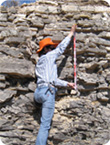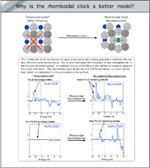
Death Valley Basin-Fan Systems
J.R. Knott, PhD
California State University Fullerton

"I did my PhD work in Death Valley, and one of the things that always surprised me was how little we really knew about its evolution," says Dr. Knott. Using funds from the Petroleum Research Fund, Dr. Knott turned that early fascination into research reconstructing how Death Valley has evolved over the past three and a half million years.
Read the full story >Gas Well Productivity Loss

Jagannathan Mahadevan
Petroleum Engineering, University of Tulsa, Tulsa, OK
Dr. Mahadevan's curiosity has led him to investigate natural gas recovery from unconventional onshore resources. "I started as a chemical engineer in an academic setting, which brought me to chemical and natural gas processing plants," says Dr. Mahadevan. "I was very keen on working on energy, especially natural gas, since natural gas is one of the largest and cleanest energy resources we have right now.
Read the full story >Permian Basin Sedimentary Geochemistry
Paula J. Noble, PhD
Department of Geological Sciences, University of Nevada, Reno

One of the first priorities in petroleum exploration is to understand the basic geology of the area in question. Knowing how old the rocks are and the environments in which they formed determines where best to drill. Paula Noble is refining the tools used to date rocks–specifically, researching the factors that control the distribution of albaillellarians, a group of fossil zooplankton that show large variances in species dominance in the Permian Basin.
Read the full story >Electronic Structure of Surface Alloys

Janet E. Kirsch, PhD
Department of Chemistry, University of Wisconsin-La Crosse
Surface alloys, pure metals that have an alloyed structure in their top few atomic layers, have a particularly strong potential for catalytic, magnetic, and/or electrochemical applications. Because of the differences between bulk and surface atoms, these alloys often exhibit catalytic properties different from those of pure metal. Janet Kirsch and her research team are applying computational chemistry in order to understand why certain alloys undergo a reconstruction of their surface structures.
Read the full story >



